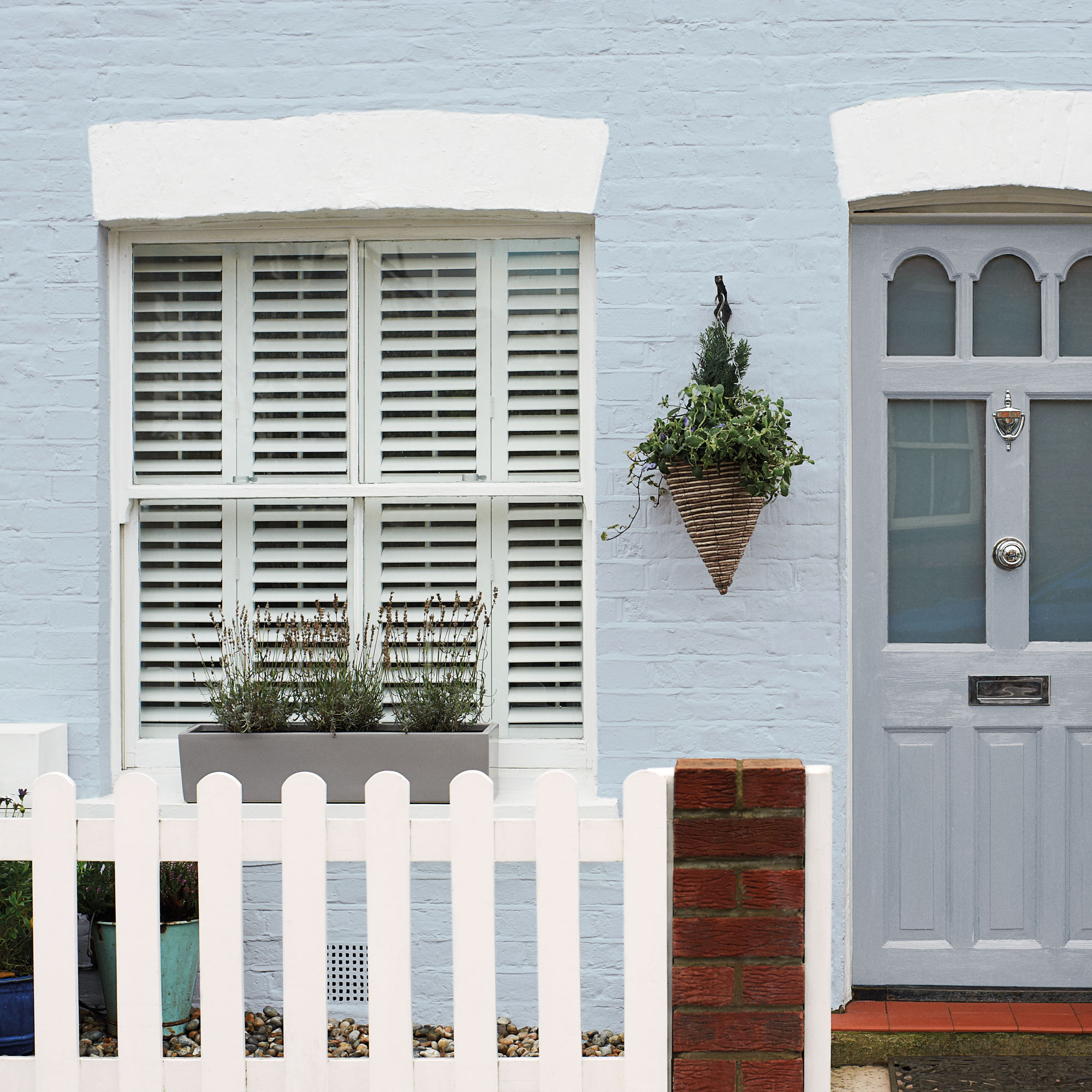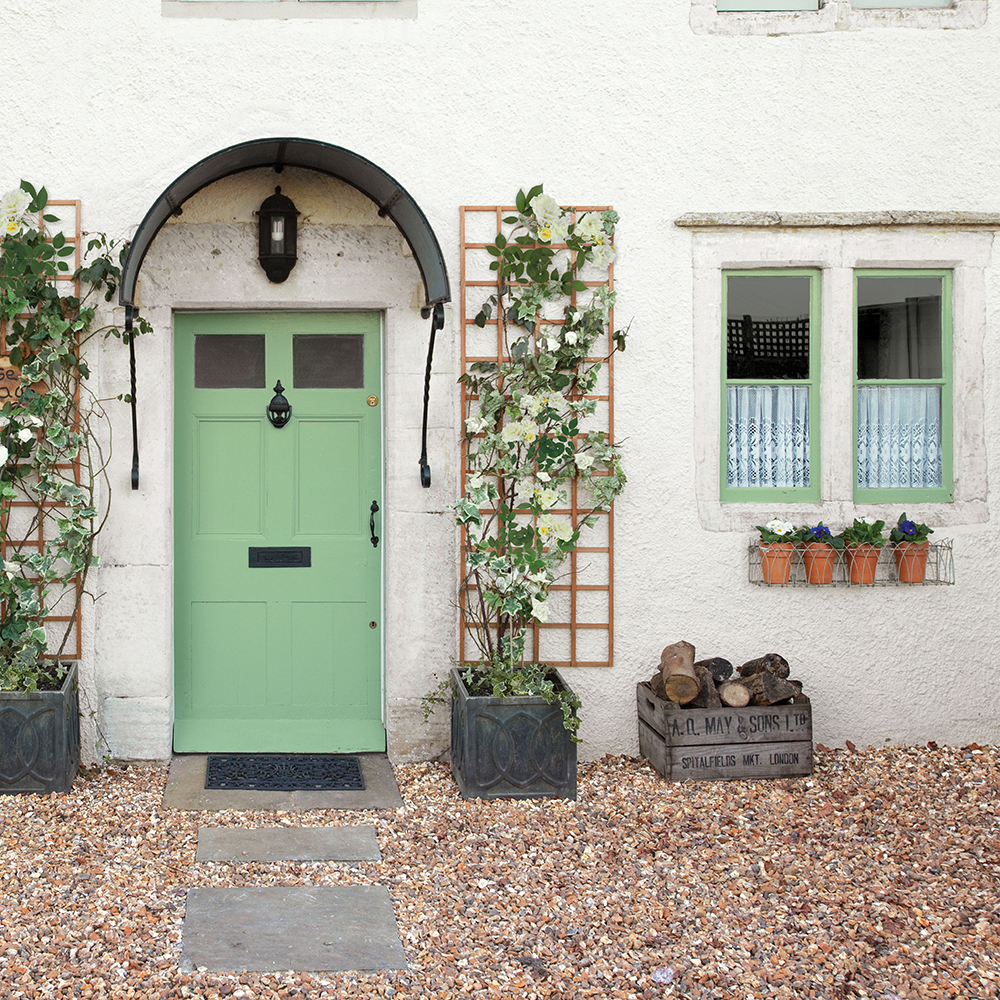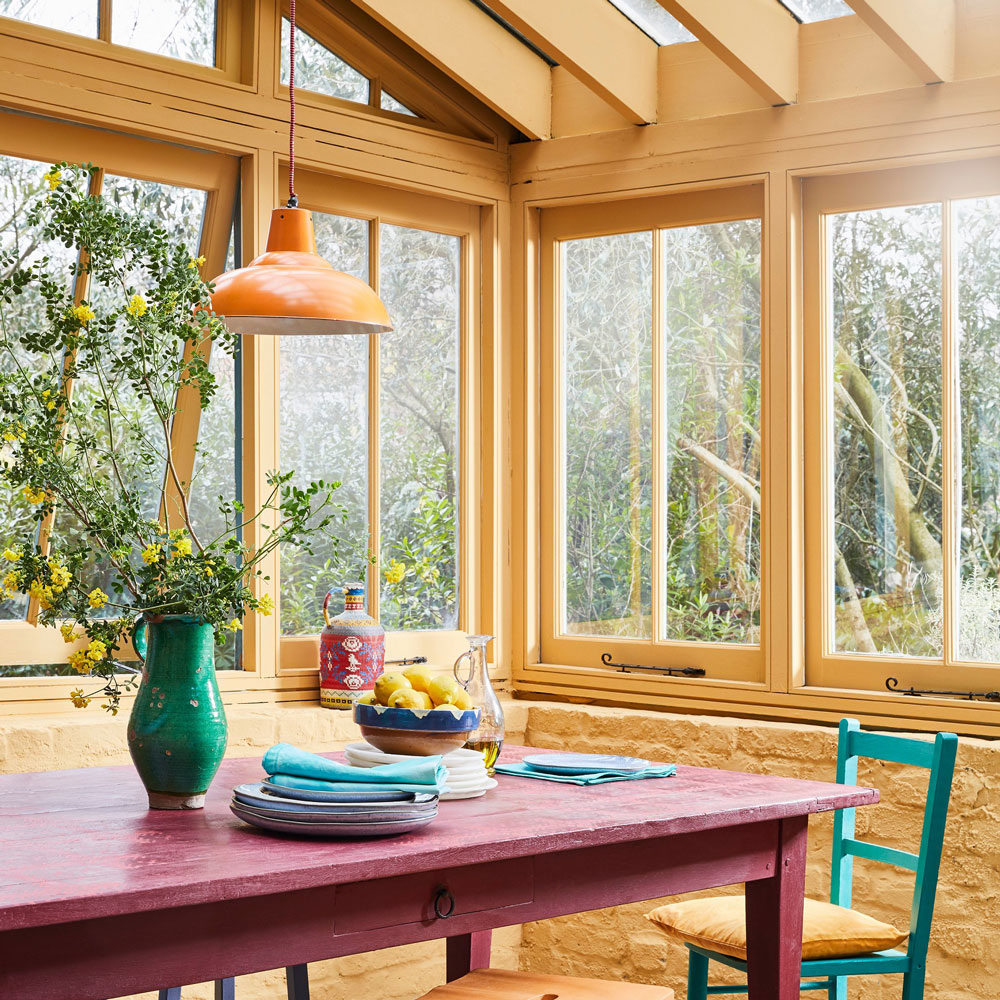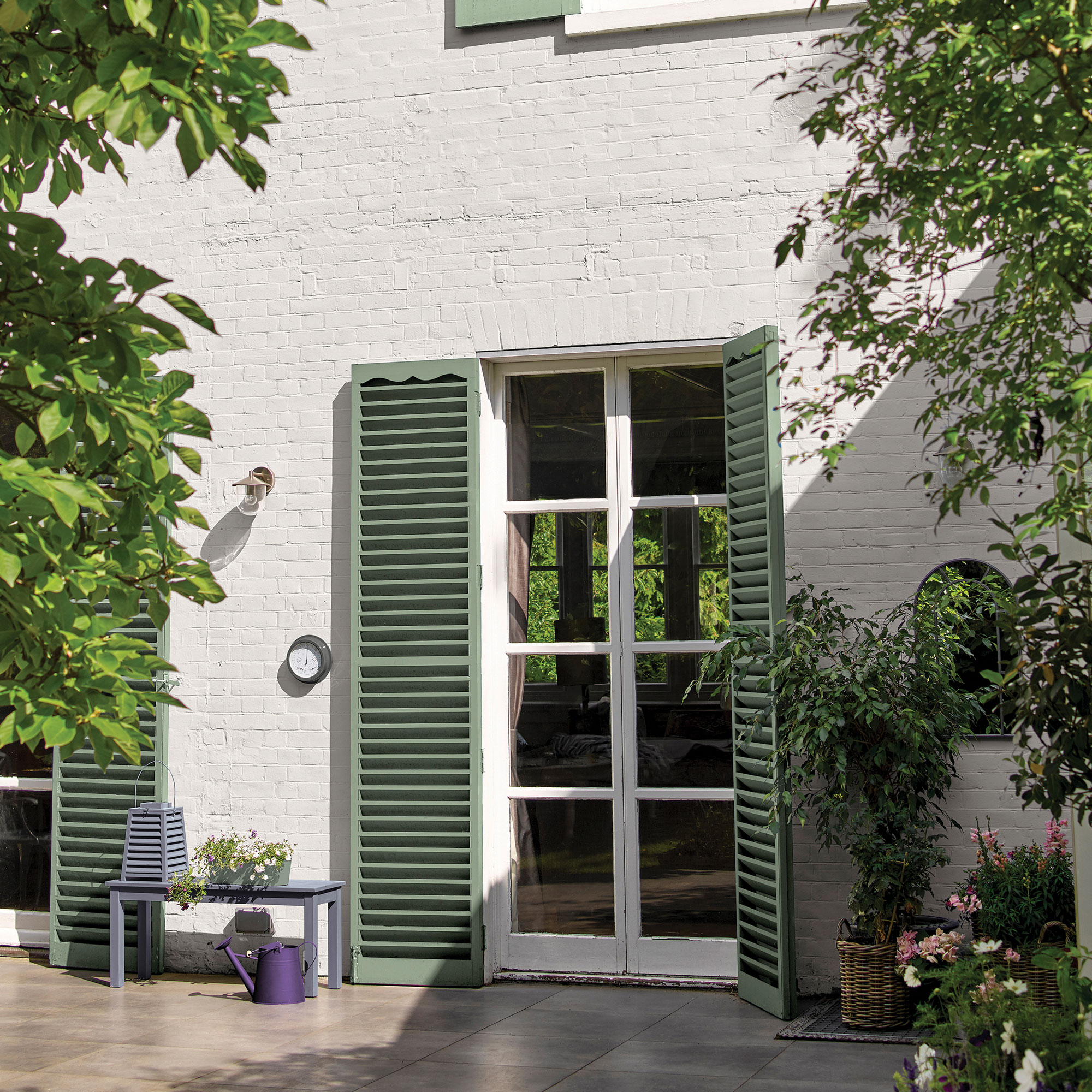How to paint windows – give your exterior frames a fresh new look
Smarten up your home's exterior with fresh lick of paint

Painting windows takes patience, preparation, and a steady hand. But it's well worth the effort – if you're wondering how to paint windows, just follow our step by step to freshen up your frames fast.
There's a lot to be done before you even pick up a paint brush, but as paint ideas go, it makes a dramatic difference to the outside of your home in a fairly short space of time. Plus, it'll help your windows withstand the elements, keeping them in good condition for years to come. So get out there and spend a few hours giving your window frames a fresh lick of paint (we recommend starting early in the day).
How to paint windows
Give tired wooden frames a crisp and clean look with white paint, or elevate your exterior by embracing colour, from sunny yellows to soft greens. Old aluminium frames can be given a graphic update with a lick of black paint to get the look of new fittings.
Once your windows look as good as new, keep them sparkling inside and out with our guide how to clean windows.

What you'll need to paint window frames
- Masking tape or a masking pen
- Flexible wood filler
- Safety goggles
- Sandpaper
- Primer or undercoat
- Exterior wood paint (a gloss finish is popular as it's reflective, making windows feel brighter)
- Cutting-in brush
- Small and medium paintbrush
1. Clean the window frames
First of all, make sure the frame is clean and dry. Give it a good going over with a hand brush to get rid of dust and cobwebs, then wash with warm water. Make sure the glass is nice and clean as this will help create a strong seal between the paint and glass later on.
2. Smooth things over
Fill any cracks or holes with flexible wood filler, such as Wilko's Knot a Problem. You can also use a paint scraper to get rid of loose paint from the frames.
Buy now: Ready Mixed Flexible White Wood Filler 1kg, £7.25 at Wilko

3. Tape the windows and then sand
It's worth taping around the edges with masking tape before sanding as it's easy to accidentally scratch the glass, leaving unsightly marks. Leave a 2mm gap between the tape and the frame.
This will prevent paint splatters and mean your paint overlaps slightly onto the glass to seal out water. Put on your safety goggles and sand gently, with the grain of the wood, and remove the dust produced.
If you find it easier, use a masking pen, which leaves a layer of wax on the glass. When the paint is dry, you simply remove it with a scraper. Don't scrape dry glass as you could scratch it, so spray and wipe with a window cleaning solution first.
4. Prime the surface
Use a 2-inch brush to apply a coat of primer or undercoat to the frame and sill, using a half-inch brush for more intricate areas. If you’re going to be using standard gloss or satin, make sure your primer is weatherproof for a longer-lasting finish.
You may be able to skip this step if using a modern paint solution, such as Frenchic paint or Rust-Oleum – solutions that don't require a primer first.
Buy now: Dulux Weathershield Exterior Preservative Primer, 750ml, £15.30 at Amazon

5. Leave to dry
The time this takes will depend on the paint and the weather conditions. Avoid painting in hot sun as the paint will start drying and become sticky as you’re brushing it on.
If you do run into decorating mishaps, follow our guide on how to fix paint problems, such as peeling, blistering and flaking.
6. Paint smart
Stir your chosen colour thoroughly and apply with a brush, not a mini roller, pressing it into corners. For the best results, start with the transoms (against the glass) with an angled cutting-in brush, then swap to a small-to-medium brush to do the top and bottom horizontals, then the verticals and, finally, the sill.
If you are using more than one tin of paint, make sure the batch numbers are the same to avoid any variation in colour. For an even coverage, it's best to start in one spot and methodically paint around the frame rather than dotting about.

7. Dry and repeat
Allow to dry completely and apply at least one more coat. When you do your final coat, make sure your brush strokes go in one direction for a neater finish.
Remove the masking tape before the final coat is dry to prevent your water-sealing border from being lifted off with it. Or remove with wax and a scraper after it's dry.
Forgive us the old cliché, but they do say that windows are the eyes of the house. And as we all know, tired eyes are far from ideal. A lick of paint will get them looking like new for a fraction of the cost of replacement windows.
Once you've painted your windows, tasks like painting skirting boards will be a breeze. Happy decorating!

What kind of paint do you use on windows?
'Exterior eggshell is the best finish for window frames,' says James Greenwood from Graham & Brown. 'It's water-based so it’s better for the environment, and is dry in only one hour so you can get the job done quickly.'
Should I tape windows before painting?
'When painting around windows, use masking tape. Remove masking tape while the paint is still wet so the paint doesn’t crack,' says Matthew Brown from exterior masonry paint company Sadolin & Sandtex.
What's the easiest way to paint windows?
'If you’re going to have a go at painting your own windows then do start the job early in the day so you have clear daylight,' says Elaine Penhaul at Lemon & Lime Interiors. 'As it can be tricky to see imperfections and missed areas as the light goes.
'It’s also best to paint on a day when it is warm outside so that you can leave the windows open to ventilate,' says Elaine. Make sure you have all the necessary tools listed above, prepare well, and take your time.
'The key to learning how to paint windows is to make sure they still work afterwards,' adds Ash Read from Living Cozy. 'If you paint over your window tracks and weather strips, they won't work properly. Covering these sections with masking tape is sometimes the quickest method to avoid painting them.'
Will acrylic paint come off a window?
'A plastic paint scraper, putty knife, or the edge of a credit card can be used to remove dried acrylic paint from glass,' comments Ash.
Get the Ideal Home Newsletter
Sign up to our newsletter for style and decor inspiration, house makeovers, project advice and more.

Amy Cutmore is an experienced interiors editor and writer, who has worked on titles including Ideal Home, Homes & Gardens, LivingEtc, Real Homes, GardeningEtc, Top Ten Reviews and Country Life. And she's a winner of the PPA's Digital Content Leader of the Year. A homes journalist for two decades, she has a strong background in technology and appliances, and has a small portfolio of rental properties, so can offer advice to renters and rentees, alike.
-
 Wood drenching is the calming new twist on the colour drenching trend – here’s how to make the look work in your home
Wood drenching is the calming new twist on the colour drenching trend – here’s how to make the look work in your homeIt’s easier than ever to embrace natural materials
By Maddie Balcombe
-
 Aldi is launching a £200 day bed with four different features - its sleek design is suited to the whole family
Aldi is launching a £200 day bed with four different features - its sleek design is suited to the whole familyYou don't want to miss out on this Specialbuy
By Kezia Reynolds
-
 How to set up a drip watering system that saves water and a lot of effort
How to set up a drip watering system that saves water and a lot of effortKeep your plants hydrated (and your water bill down) with this clever garden watering solution
By Natalie Osborn